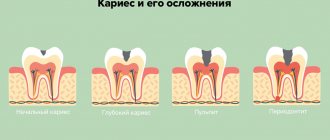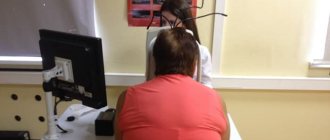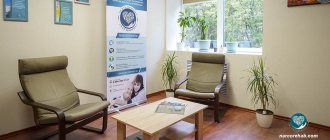February 4, 2019
If the cheekbones on your face hurt, then this is a serious reason to think about your health and the lifestyle you lead. It is also necessary to pay attention to the nature and location of pain. In most cases, you will need to undergo a comprehensive examination of the body. It is important to do this for the simple reason that the cheekbones are close to vital organs and systems, to the brain. Accordingly, any inflammatory process from here can very quickly move to other organs and pose a real threat to life.
And the editors of the portal UltraSmile.ru propose to consider the main reasons why discomfort in the zygomatic area of the face may bother you. But first, let's define the terminology.
For what reason can cheekbones hurt?
Cause of pain #1: dental disease
Painful sensations can be felt in the cheekbone even when there is ordinary caries or pulpitis, periodontitis, stomatitis or alveolitis resulting from tooth extraction. After all, all the organs of the maxillofacial apparatus are located dangerously close to each other.
The photo shows inflammation of the hole after tooth extraction, which can cause pain in the cheekbone
It’s worse when a simple dental disease remains untreated for a long time and the infection begins to spread further, reaching the zygomatic area of the face. Then your cheekbones may already hurt from a more serious pathology - osteomyelitis. The disease affects the bone tissue of the jaw, causing suppuration and necrosis, accompanied by a general deterioration in health, body temperature rises, and the face may become swollen and deformed.
“Osteomyelitis of the upper jaw is observed in medical practice much less frequently than the lower jaw. However, the disease is considered very dangerous because its untimely or incorrect treatment can lead to a broken jaw, sepsis, damage to internal organs, pulmonary failure, and phlegmon. Therefore, it must be treated surgically, additionally use anti-inflammatory therapy, antibiotics, treat neighboring organs affected by the pathological process and remove the affected teeth,” explains Tsorieva E.O., therapist, surgeon.
Osteomyelitis comes in different types: traumatic, radiation (occurs against the background of the appearance of malignant cancerous tumors), hematogenous (infection enters through the blood from neighboring affected organs). But most often the disease is odontogenic in nature, i.e. is a consequence of advanced caries, pulpitis and other dental problems.
Diagnostics
The cause of pain in the cheekbone is determined by the maxillofacial surgeon. According to indications, the patient is referred to an otolaryngologist, neurologist, and other specialists. During the survey, the time and circumstances of the onset of the symptom, the dynamics of its development, and the presence of other manifestations indicating the nature and localization of the pathological process are established. During the dental examination, dental diseases are excluded.
When determining the etiology of neuropathic pain, an important role is played by the study of trigger points and special tests (for example, with dicaine and adrenaline for ganglionitis of the pterygopalatine ganglion). To clarify the diagnosis, the following procedures are prescribed:
- Radiography.
X-ray examination of the zygomatic bone, orbit or maxillary sinus is used for injuries, osteomyelitis, sinusitis, and pansinusitis. Allows you to establish the type and severity of the pathology, determine the need to prescribe additional techniques or treatment tactics. - Other imaging techniques
. They are used at the final stage of the examination when X-ray data are ambiguous. Provide detailed information about the location, characteristics and extent of the pathological focus. - Otolaryngological examination
. Indicated for ENT diseases. May include anterior rhinoscopy, diagnostic puncture and probing of the maxillary sinus. - Lab tests
. Inflammation is characterized by leukocytosis with a shift to the left and an increase in ESR. In purulent processes, based on the results of inoculating the material on nutrient media, the pathogen is determined and antibiotic sensitivity is established.
Dental treatment
Cause of pain No. 2: perforation of the bottom of the maxillary sinus
You will be interested to know that the cause of severe pain in the cheekbone area, wings of the nose, temples and eyes can be due to poor-quality or unprofessional tooth extraction, installation of implants in the upper jaw or due to poorly performed sinus lift (an operation to increase the missing volume bone tissue).
The fact is that such serious procedures can only be trusted to be performed by experienced doctors, whose experience in this field is confirmed by numerous official documentation and patient reviews. Otherwise, you risk encountering difficulties. Moreover, the longer you wait and do not get rid of the consequences of improper treatment, the more severe the complications will be:
- sinus injury: after the loss of teeth in the upper jaw, the bottom of the maxillary sinuses gradually descends, because The jaw bone here is quite thin and, due to lack of load, begins to quickly atrophy; accordingly, there is always a risk of injuring the sinuses. For example, they can be damaged if the implant model is incorrectly selected, if the location of its installation in the bone is incorrectly determined, if preparation for treatment is not carried out thoroughly,
- chronic sinusitis: inflammation in the sinus area is not in vain for the patient, and violation of work technique during osteoplastic surgery or dental implantation can lead to such consequences,
- meningitis and infectious diseases of the brain, inflammation of the jaw bone, the occurrence of abscesses,
- peri-implantitis, implant displacement and rejection.
Perforation of the floor of the maxillary sinus can cause this symptom
“Today, zygomatic dental implantation methods are gaining popularity. They allow patients without teeth, but with extreme atrophy of bone tissue in the upper jaw, to leave the clinic with a new smile in an extremely short time. The protocols involve the use of special models of implants that are installed directly into the zygomatic bone of the upper jaw. Work with them must be carried out with extreme caution and precision; the doctor must first plan all treatment in advance and work out possible risks. Otherwise, the patient has every chance of getting severe complications - damage not only to the zygomatic bone, but also to the maxillary sinus,” says Put V.A., 27 years of work experience, an implant surgeon who was one of the first in Russia to start using it in practice. zygomatic implantation.
Cause of pain No. 3: arthritis or arthrosis
These diseases cause damage to the joints and inflammation of the cheekbone is no exception. What additional symptoms can you feel with these pathologies:
- pain and spasms: with arthrosis, pain will only occur in response to irritating factors and physical activity. For example, when chewing food or when talking, when yawning and opening the mouth. With arthritis, it does not go away even in a calm state and often makes people nervous at night. Please note that in such cases not only the cheekbones will hurt, but also the jaws,
- crunch: you can hear how your joints on your face begin to click and make characteristic sounds when you open your mouth,
- Swelling: The affected area may be swollen, which will naturally affect your appearance. For example, in some cases there is facial deformation.
“My mother actually had this disease - arteritis, something like inflammation of the facial artery. It can easily be confused with arthritis or arthrosis, but it is completely different. And by the way, before she went to the doctor, she said for a long time that it hurt only on one side - the left cheekbone on her face. Only then did the pain begin to radiate to all parts of the face and nothing was clear: the eyes hurt, and the teeth, and the lower jaw, and the nose and around the lips. The doctor then said that it is very dangerous to ignore such a pathology, because it could end in a cerebral hemorrhage!”
Rita, 32top.ru
Joint problems can cause pain
If you have developed arthrosis or arthritis of the cheekbone, treatment may be carried out by a general practitioner, surgeon, orthopedist or rheumatologist. Ointments, injections, physiotherapy, and sets of gymnastic exercises aimed at strengthening joints and developing their elasticity help get rid of the problem. Also, during treatment, the patient must adjust the diet, avoiding too harsh foods, limit physical activity, and avoid stress and hypothermia.
Treatment of headaches and facial pain
The treatment regimen for headaches and pain in the face is selected individually. It will include measures to eliminate the underlying disease, as well as to relieve symptoms. Based on the diagnostic results, the doctor may prescribe the following methods:
- drug treatment - may include anti-inflammatory and painkillers, antibiotics, drugs to improve cerebral circulation;
- physiotherapy – carried out to stimulate blood circulation and innervation in the face and head;
- diet for blood vessels - includes simple foods, with a minimum amount of fried foods, animal fats, fast food and spices;
- surgical intervention - most often prescribed for mechanical compression of nerves and blood vessels, in the presence of neoplasms and dental diseases, as well as for clearing the contents of the paranasal sinuses.
Doctors at the Clinical Institute of the Brain will select appropriate treatment tactics based on the results of a general examination. For most patients, it is enough to take medications, follow a diet and adjust their daily routine to improve their health. However, for some diseases surgical intervention is indicated.
Cause of pain No. 4: neuralgic diseases
What pathologies can manifest themselves in this way:
- damage to the ternary nerve: facial neuralgia almost always occurs against this background. After all, the ternary nerve carries impulses to all parts of our face and extends to the eye, maxillary and mandibular region. Damage to the triangular nerve can occur for a variety of reasons. Starting from an unhealthy lifestyle, the occurrence of constant colds and stress, ending with incorrect dental treatment, unprofessional installation of implants or traumatic tooth extraction,
Damage to the triangular nerve can occur for a variety of reasons. - Charlen's syndrome: the disease is also called neuralgia of the nasociliary junction. Here the pathology can be determined by the corners of the eyes. In them, patients usually feel particularly sore, which manifests itself even during the night hours of rest. When pressing on the corners of the eyes, the pain will intensify,
- Sluder syndrome: the upper jaw always hurts here, mainly near the base of the nose. All this is accompanied by inflammation of the nasal mucosa, increased secretion of secretions, salivary fluid, and lacrimation. You can also replace facial swelling,
- Frey's syndrome: pain is localized near the ears and temples,
- neuralgia of the ear or facial nerve: pain in this case is almost always localized under the cheekbones and radiates to the head, and the patient experiences long-term, persistent migraines. In this case, your condition may worsen with the appearance of nausea, pain in the eyes, and tinnitus.
If you spend a long time at the computer in a sitting position, lead a sedentary lifestyle, spend little time in the fresh air, have a habit of propping your head up with your hand and holding the phone with your head, and also often experience nervous overstrain and stressful conditions, then the appearance of neuralgic diseases and disruption of natural blood circulation may well manifest itself as pain in the cheekbones.
In some cases, to diagnose the disease, you will have to do an MRI of the head.
For various types of neuralgia, be sure to consult a therapist or neurologist; you may also need the help of a surgeon or dentist; it would be good to undergo an MRI of the head and take a blood test. In addition to the prescribed course of treatment (depending on the pathology), physiotherapy, acupuncture, electrophoresis, and massage techniques will give a good effect.
Treatment
Conservative therapy
Analgesics are used to eliminate intense pain. The list of other therapeutic measures is determined depending on the characteristics of the pathological process:
- Traumatic injuries
. Patients with a fresh fracture of the zygomatic bone without displacement are prescribed a protective regimen, gentle nutrition, and physical therapy. If there is displacement, reposition is performed, then management is carried out in the same way as in the previous case. - Osteomyelitis
. The basis of treatment is antibiotic therapy, taking into account the sensitivity of the pathogen. Antibiotics are administered intramuscularly, or intraosseously during surgery. They or nitrofurans are used to wash the surgical wound. - Neuralgia
. Patients with damage to the trigeminal nerve are prescribed anticonvulsants; antispasmodics, antihistamines, and medications to improve microcirculation are used as auxiliary agents. For ganglionitis, the nasal cavity is lubricated with dicaine, and ganglion blockers are sometimes used. Along with general remedies for neuropathic pain, therapeutic blockades are effective. - Dental diseases
. Taking into account the nature of the pathology, the tooth socket is washed or the tooth cavity is treated, followed by the application of anti-inflammatory and regenerating pastes. The list of general agents includes sulfonamides and antibiotics. - Inflammation of the paranasal sinuses
. Patients are recommended antibacterial, anti-inflammatory, detoxifying and antihistamine drugs, immunocorrectors. Punctures are performed and a YAMIK catheter is installed.
Cause of pain No. 6: injuries and jaw fractures
As a result of falls, accidents, fights, or playing hazardous sports, you can damage your jaw. Moreover, regardless of the location of the damage, you may be accompanied by a pain symptom that will radiate to the zygomatic region. You will also suffer from limited mobility of the maxillofacial apparatus, speech and facial expression disorders, and facial deformation. But usually, if similar circumstances happen in life, then you will definitely be aware of everything that is happening and will not look for the reasons why your cheekbones hurt.
Jaw injury may cause problems
We hope that regardless of the situation, if you experience any painful sensations that do not go away on their own, but only intensify, you will definitely consult a doctor!
Notice
: Undefined variable: post_id in
/home/c/ch75405/public_html/wp-content/themes/UltraSmile/single-item.php
on line
45 Notice
: Undefined variable: full in
/home/c/ch75405/public_html/wp-content /themes/UltraSmile/single-item.php
on line
46
Rate this article:
( 4 ratings, average: 5.00 out of 5)
prevention
Comments
Could it be that my cheekbones hurt due to cancer? Part of my mother’s face, just in the cheekbone area, is a little swollen, I’m worried.
Marinochka (02/13/2019 at 07:47 pm) Reply to comment
- Dear Marinochka! Zygomatic pain or pain that radiates to the cheekbone area can also occur as a result of the formation of tumors. Neoplasms can be either benign or malignant. For example, sarcoma, osteoblastoclastoma, osteoma. But pain in such cases is a very alarming symptom, indicating the duration of the pathological process, because These diseases can occur for a long time without any discomfort. We hope that your mother will definitely see a doctor in the near future and undergo an examination.
Editorial staff of the portal UltraSmile.ru (02/16/2019 at 08:07) Reply to comment
In your article I saw a comment from a doctor on zygomatic implantation. The method interested me very much, because... For a long time I was denied dental implantation in Saratov due to acute bone atrophy in the upper jaw. Many questions arise, one of them: at the moment I have a chronic runny nose, will sinusitis develop after zygomatic implantation?
Petrova T.S. (02/27/2019 at 14:50) Reply to comment
- Thanks for the question! A professional doctor, and to carry out zygomatic implantation you need to look only for such a specialist, will never start placing implants for you if there is an inflammatory process in the nasal sinuses, i.e. with a runny nose this is impossible (but, of course, temporary). During the installation of zygomatic implants, the maxillary sinuses must be sanitized and sterile, because they are in close proximity to the zygomatic bone. First of all, you need to achieve relief of the inflammatory process, and only then proceed with implantation.
Editorial staff of the portal UltraSmile.ru (03/02/2019 at 08:28) Reply to comment
Cheekbone hurts. What can you do on your own to alleviate the condition?
Air (03/06/2019 at 20:08) Reply to comment
- First of all, if the pain is sharp and acute, take any painkiller. To relieve pain, also ensure maximum rest of the jaw, avoid eating solid foods, and do not open your mouth wide. If the cause of discomfort is sore teeth, rinse your mouth with an antiseptic or chamomile decoction, soda-saline solution. And don’t delay self-medication at home; be sure to visit a doctor soon.
Editorial staff of the portal UltraSmile.ru (03/11/2019 at 08:37) Reply to comment
Write your comment Cancel reply
Prevention methods
Timely prevention is the key to good health at any age. It is important to form the right habits that will have a positive effect on the health of the heart and blood vessels, teeth and other organs. Doctors recommend:
- eat right, get enough vitamins and microelements;
- give up bad habits - smoking and drinking alcohol affect the condition of blood vessels;
- normalize your daily routine and devote enough time to rest;
- carry out moderate physical activity to train the heart muscle.
At the Clinical Brain Institute you can undergo an accurate and high-quality diagnosis of headaches and pain in the face. There is modern equipment here that can be used to determine the causes of pain. Doctors will also select an effective treatment regimen for use at home or in the hospital of our center.











